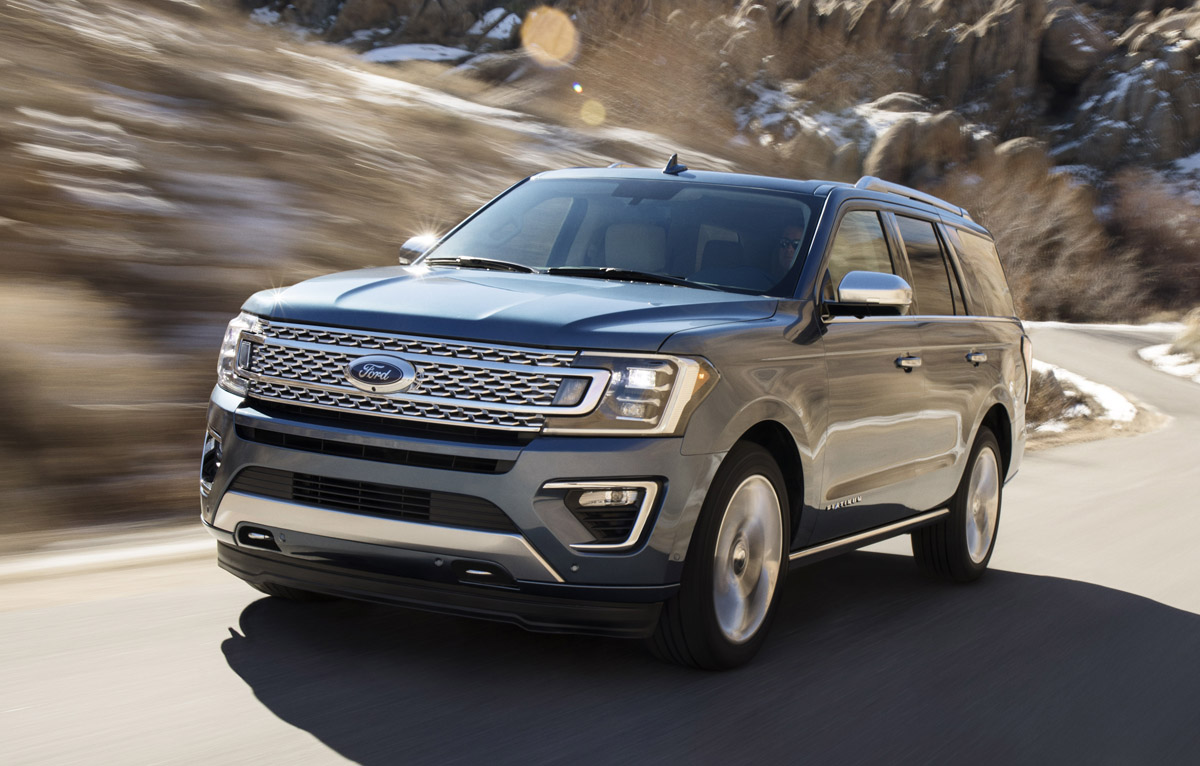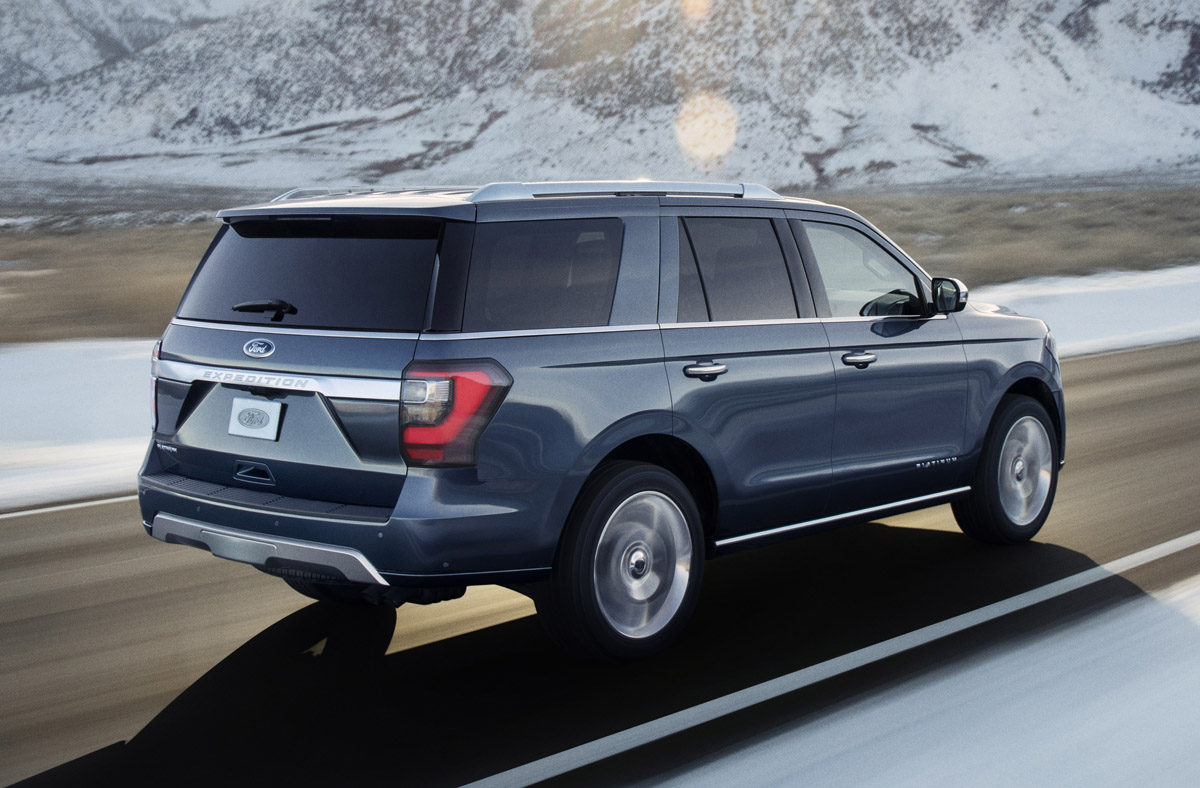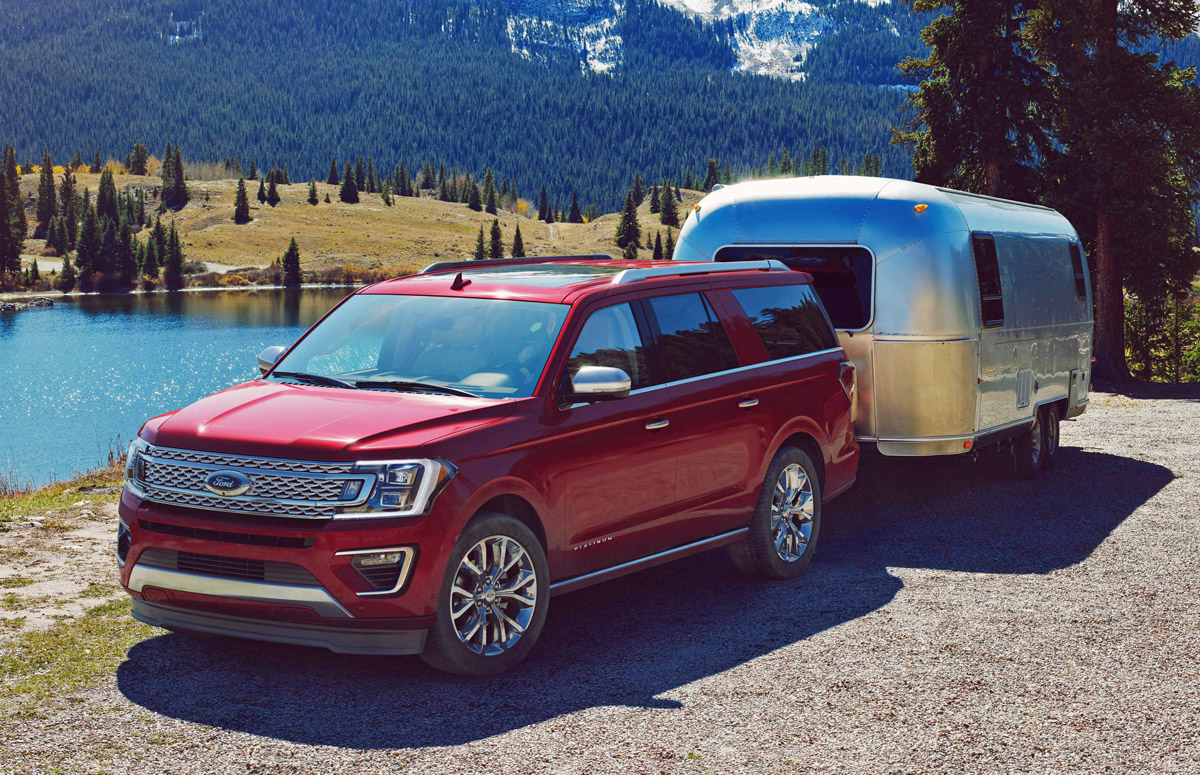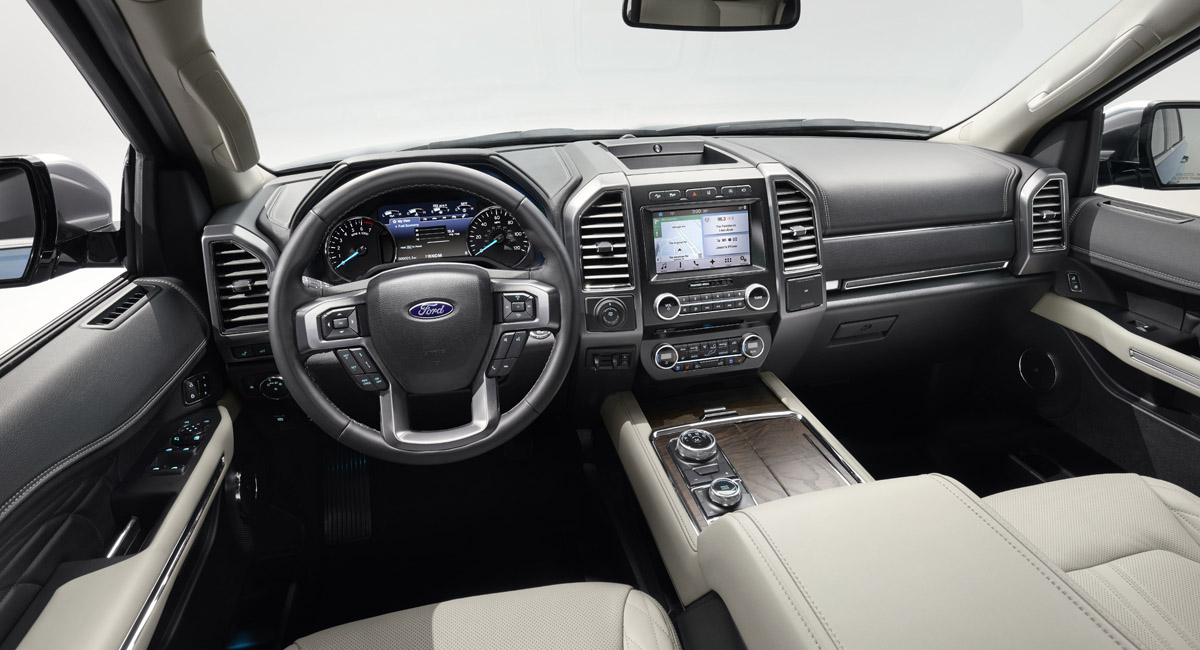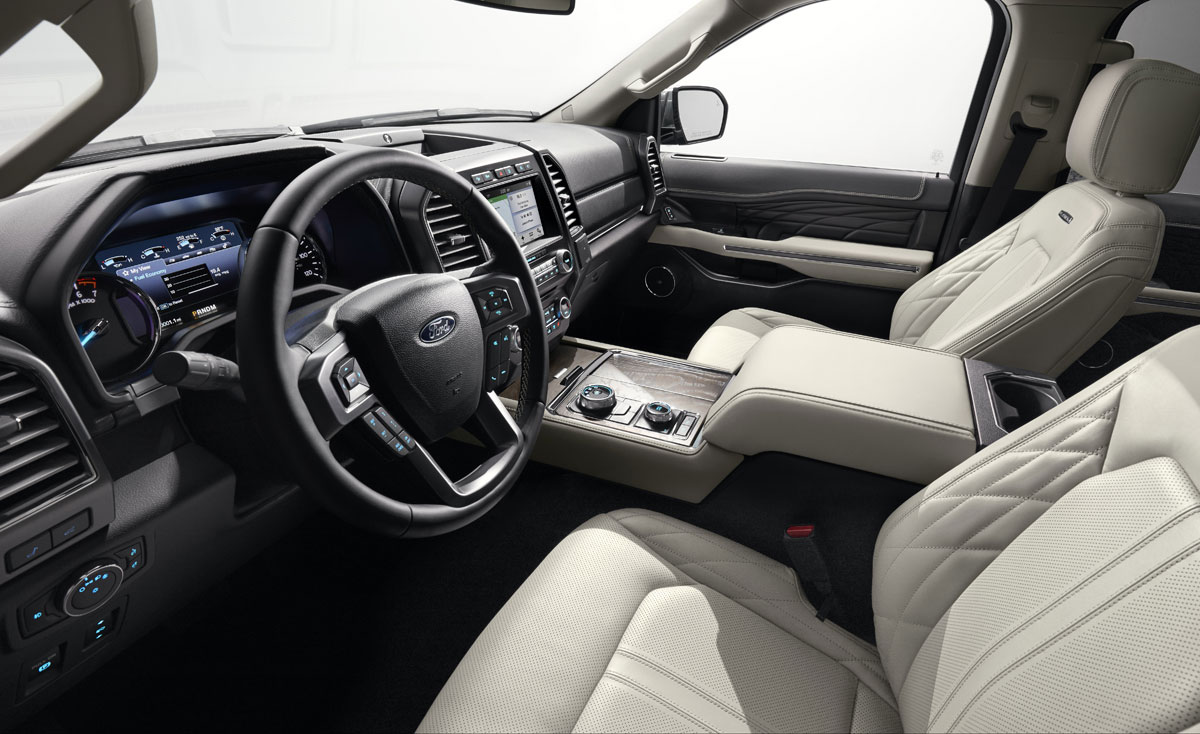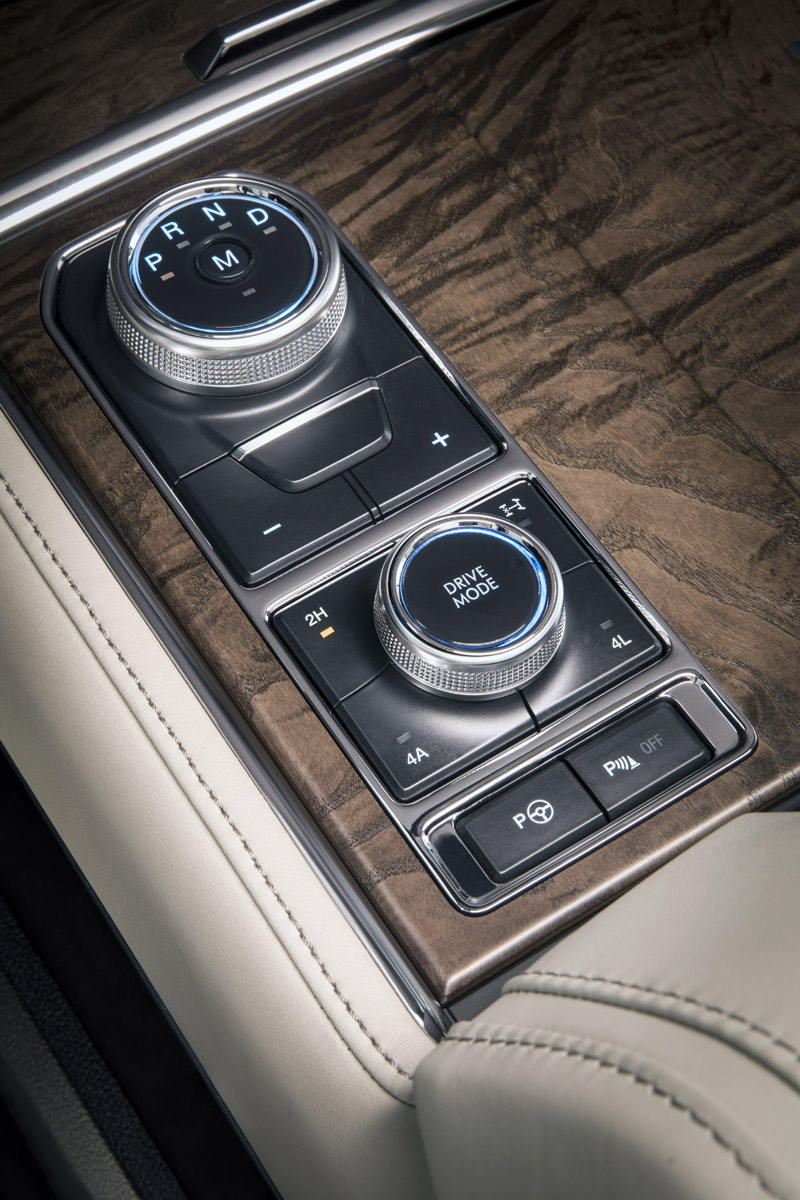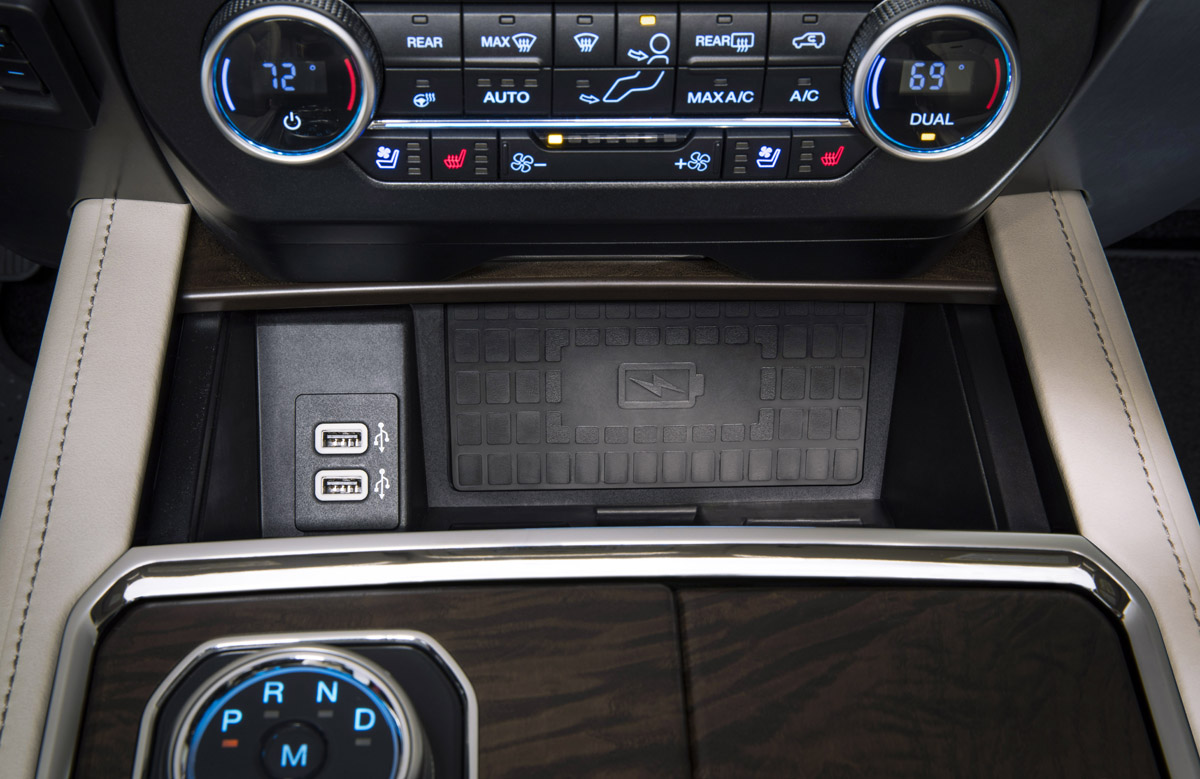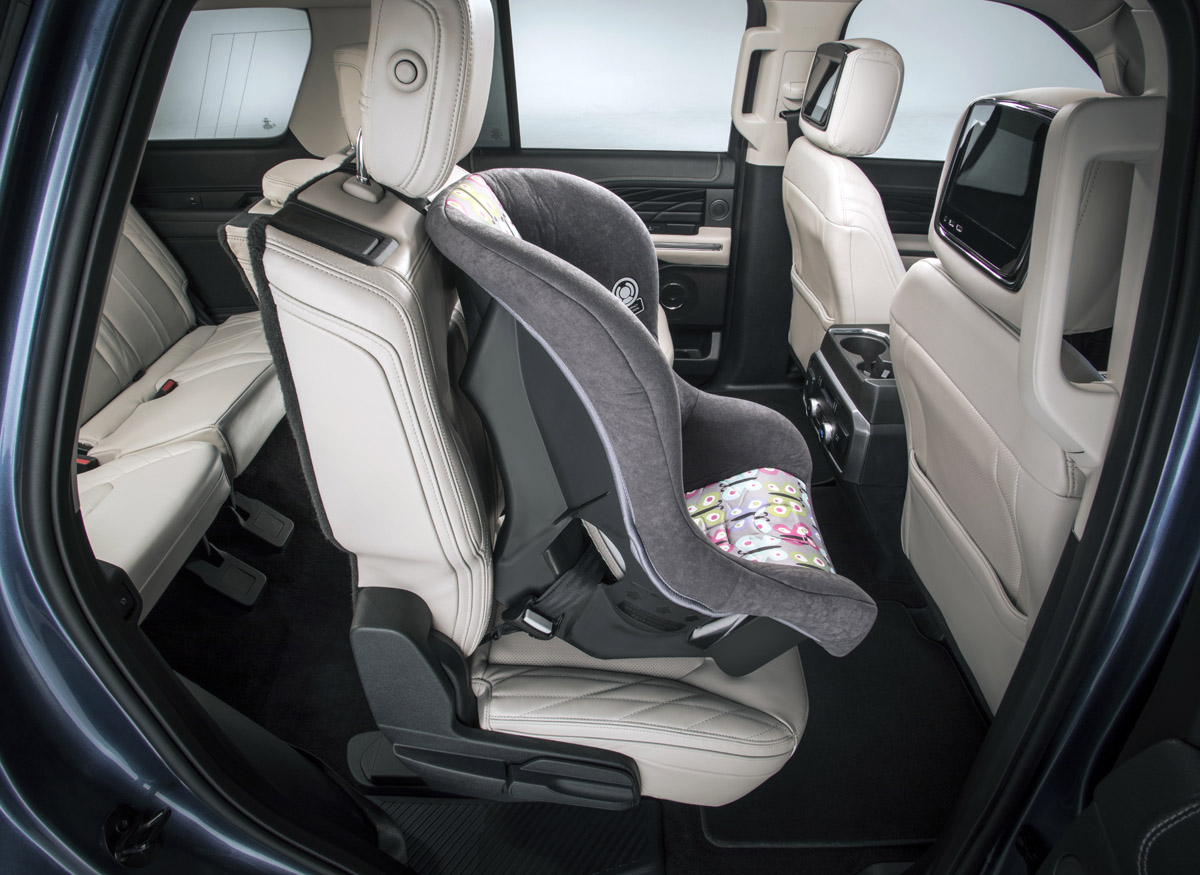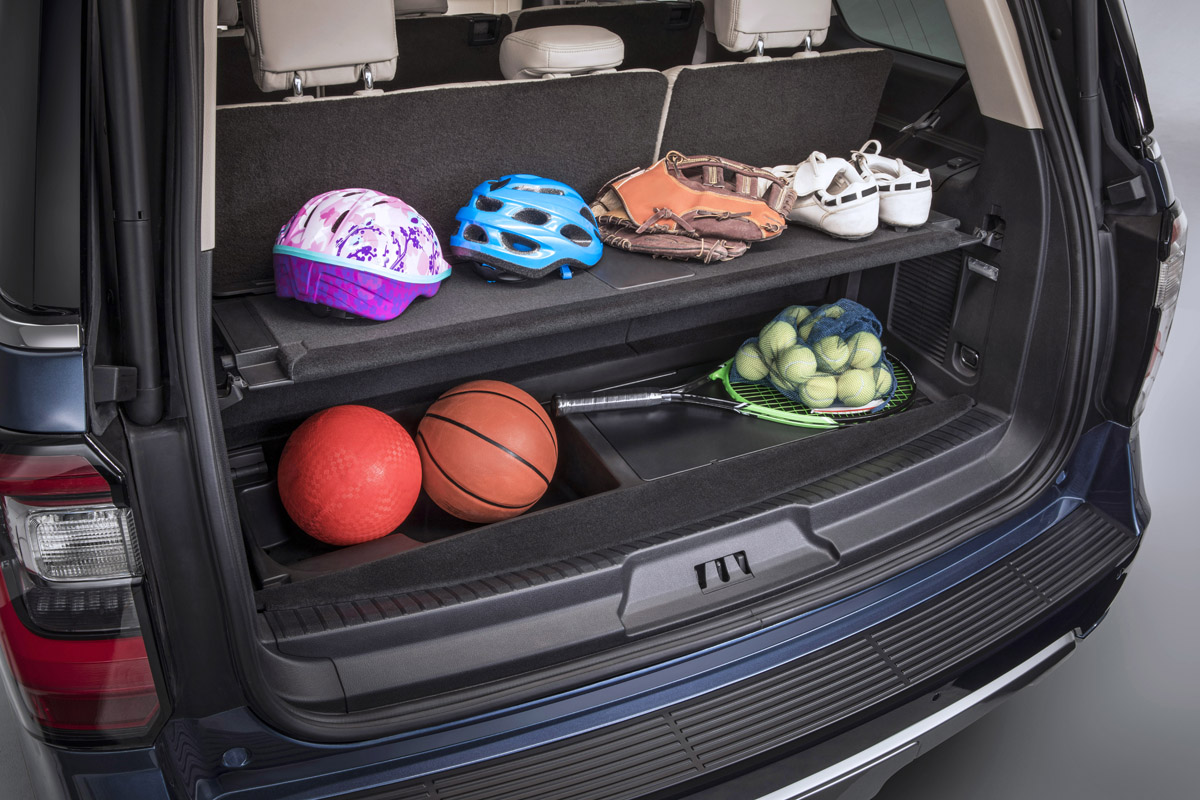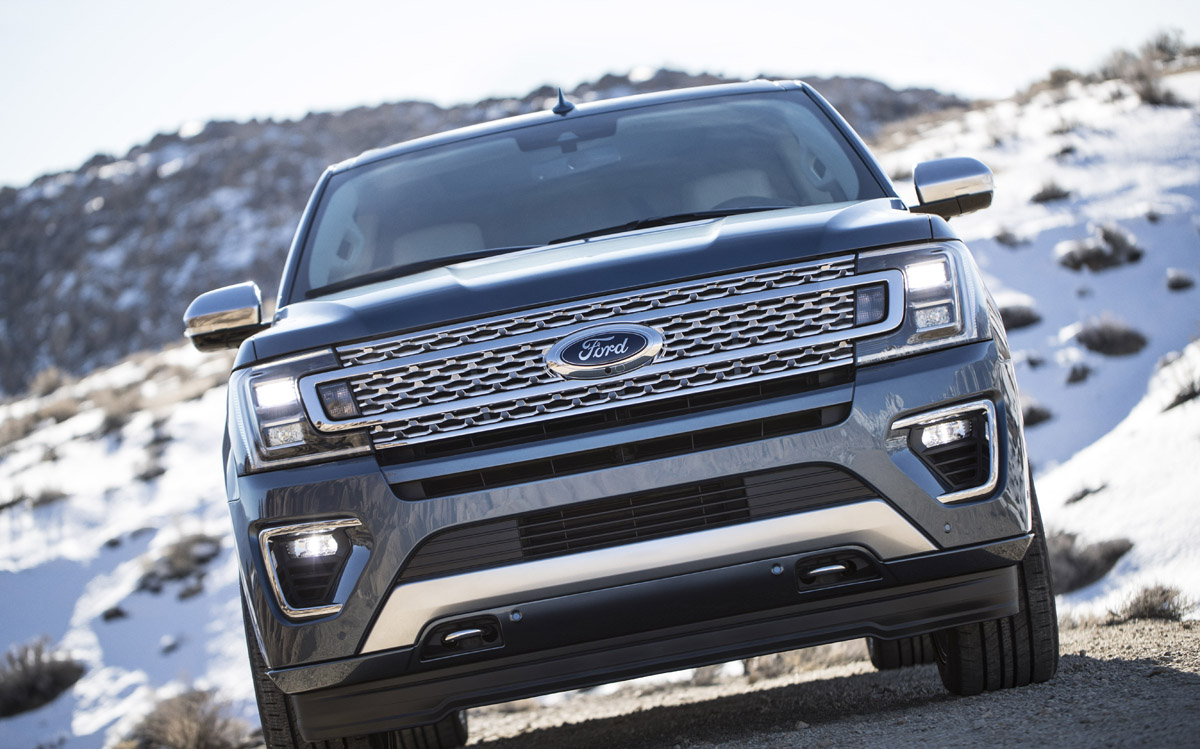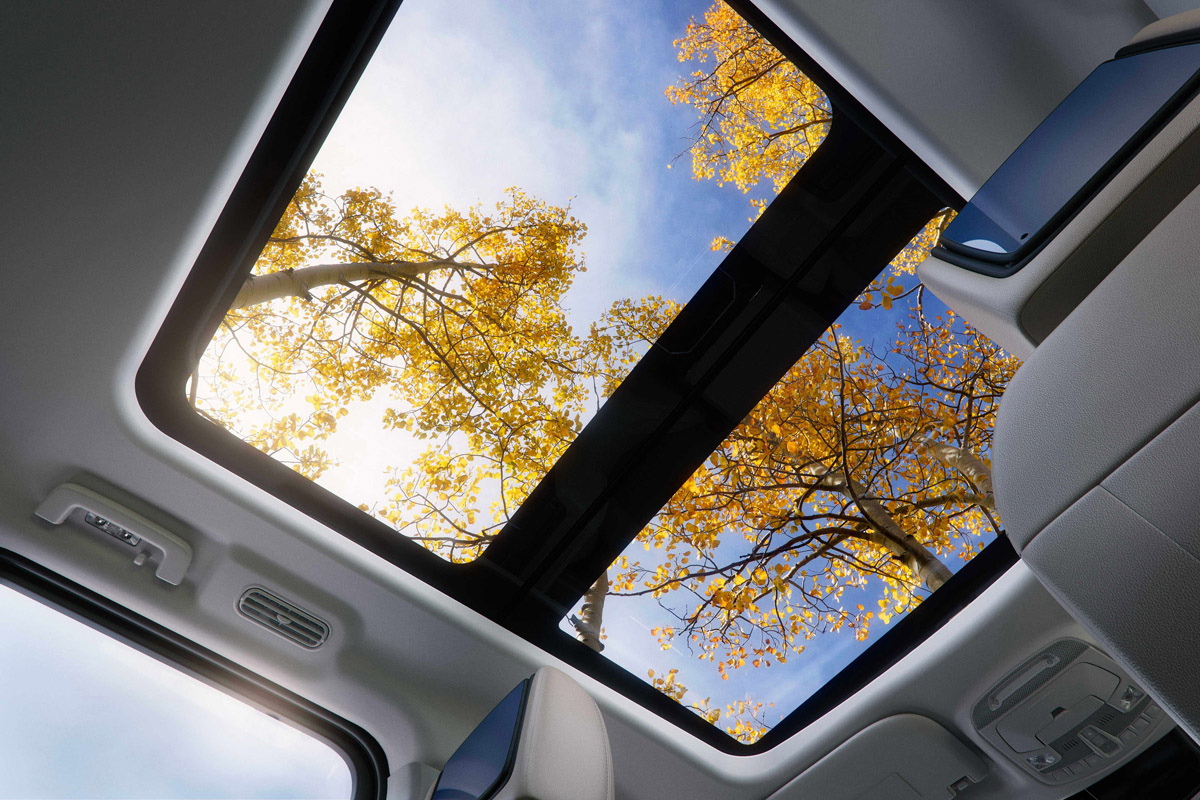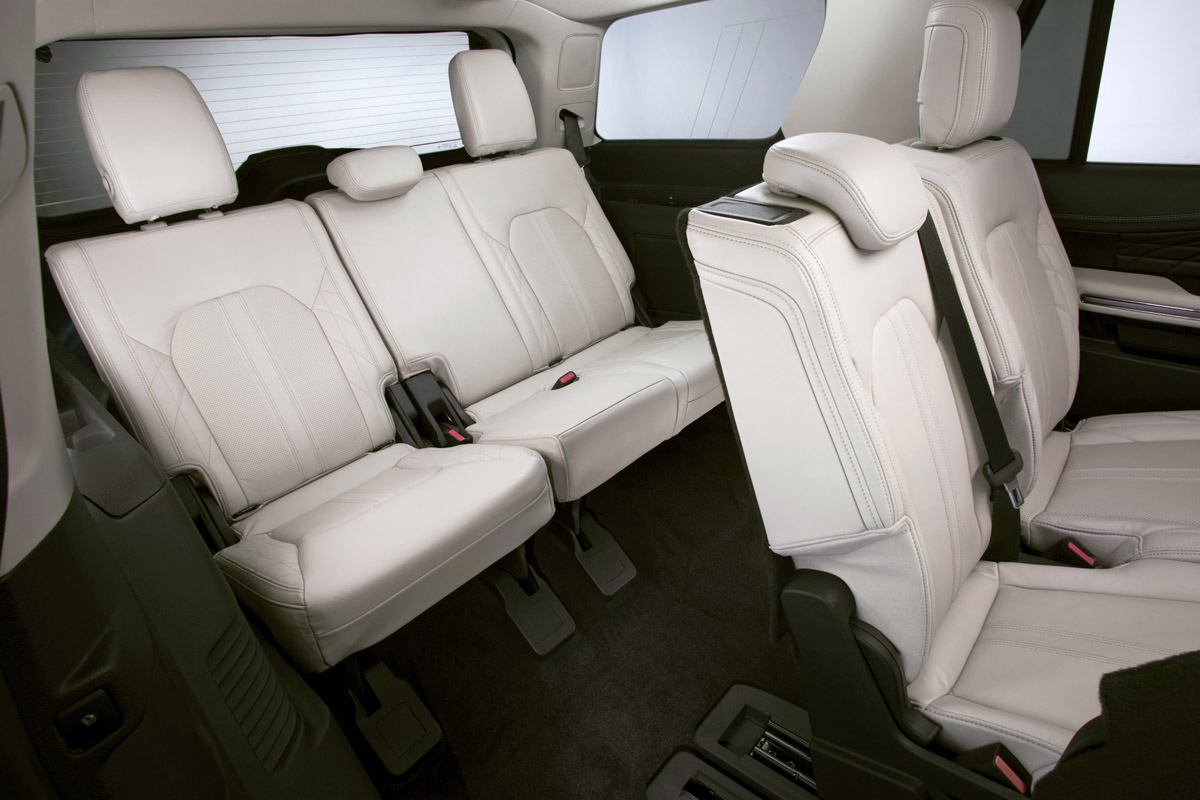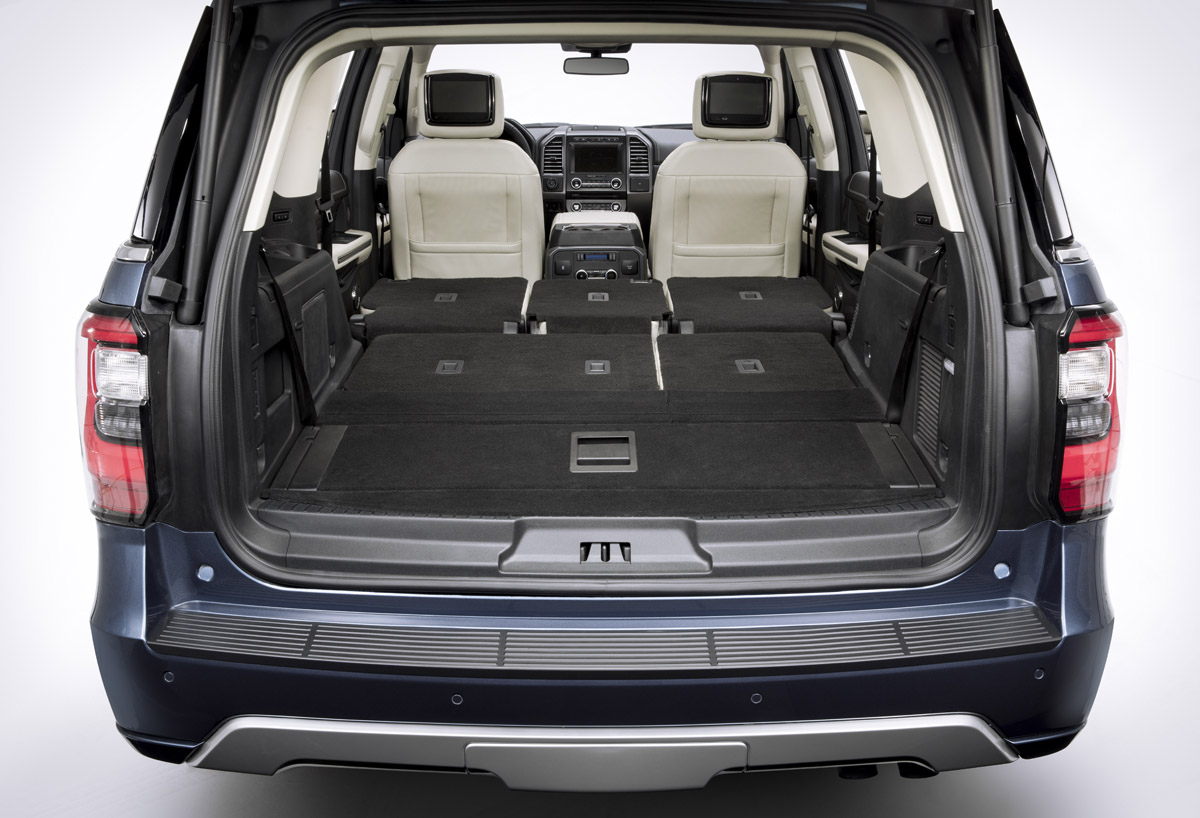At the Chicago Auto Show, the 2018 Ford Expedition made its first public debut since it had been revealed in Texas just days before. And here, Ford brought out both the standard wheelbase and extended wheelbase Expedition MAX to be seen up close and personal.
The new Ford Expedition is essentially the same size by all visual thumbnails as has to be assumed since Ford has yet to provide any specifications. The only number Ford has given us in fact is the up to 300 pounds lighter statement as a result of it’s all-aluminum body construction.
Keep in mind however it is still a body-on-frame truck-based SUV. Given the body-in-white is well more than 300 pounds less, Ford used some of that savings to give it a stronger high-strength steel frame underneath and other weight savings was spent on all the new technologies and safety features required of the new generation Expedition.
Being able to see the vehicles up close was good to really get a read on some of the detail in how it’s put together and how the trims and lighting features all cooincide. It’s clear the Expedition like before shares not a single body stamping with the Ford F-150 upon which it’s loosely based.
This means unique doors without the sill step-down of the F-150, rear doors with their own opening outlines and side flanks getting their own crease work and design. Of the many little things that caugh my eye were the way the wheel arches are actually slightly inset at the top with a protruding lip above.
Headlamps shown on the two Platinum Expeditions at the show were full LED with prominent signature daytime running lights. Fog lights were LED as well and the grille work while unique to the Expedition very much in keeping stylistically with what we see in the new 2018 F-150.
At the rear is a much better and more upscale look from the last generation Expedition. A wrap-around rear glass look is accomplished by a black plastic corner piece. If you look close however it’s got an airfoil to give the corner a sharper edge.
A standard rear spoiler finishes off the top profile in a very Land Rover like way, a detail surely many people will say was copied from them or even GM. None the less it looks pretty well done. Tail lights are brightly lit LED units, an element likely standard all the way down to entry level models.
Comparing the long-wheelbase MAX and the standard Expedition, they’ve managed well to make them look pretty uniform to one another. The big difference of course is the location of the rear door cut line relative to the rear axle and the length of the rear cabin.
Getting a look inside at this point you can see in the MAX a sizeable third-row seat space that’s easily reached by the new slide and tilt second row seat. The standard Expedition is similar but slightly tighter here.
The rear cargo area in the MAX is commendable behind the third row seat but one thing I really keyed in on was the somewhat high lift-in height of the rear cargo floor. I didn’t have a current Expedition to compare, but it seemed higher at first blush.
You can see at the door openings the additional structural elements that have come with the aluminum body construction. Aluminum is indeed lighter but often less strong than steel, so additional material has to be added at key structural areas like door frames.
The dash as we said in our first look video is virtually a dead lift from the F-150 pickup for the first time in decades with the Expedition. Not a bad thing mind you as it is well designed and plenty upscale here, with additional trim elements and genuine wood trim in the Platinum.
The major shift here is the rotary gear selector instead of a traditional gear lever. Some will love it for the open space it provides, others will hate it for its lack of intuitiveness and the missing place to instinctively rest your hand.
At least there’s an available panoramic glass roof which at least for now is a class exclusive for American branded full-sized SUV’s. Though I expect it won’t be long before GM follows up with their own offering here.
Powering the 2018 Ford Expedition at first will only be a 3.5 liter EcoBoost V6 and 10-speed automatic transmission, expected to be identical to the one in the F-150. Final power figures are not yet released but figure somewhere between 370 and 380 with torque at or about 470 pound-feet. When the Lincoln Navigator version comes it’s expected to have a bump to about 400 horsepower to be just above.

